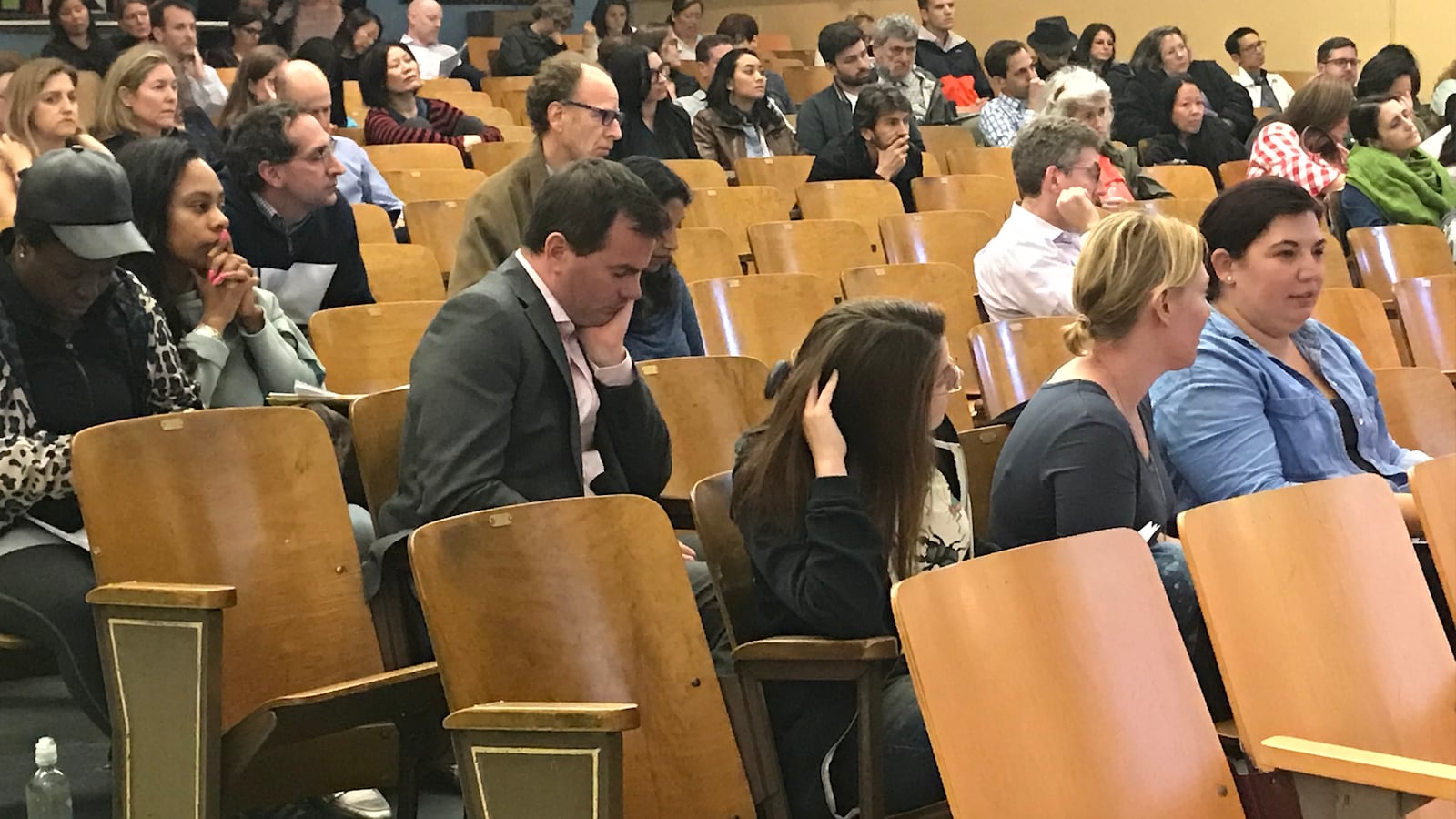Following an uproar over a plan to integrate Manhattan’s District 3, the Department of Education introduced three more proposals to change the makeup of middle schools on the Upper West Side and in Harlem.
The initial plan for integrating the 16 middle schools — which drew the ire of some parents concerned their children would be elbowed out of sought-after schools — was pulled by the education department. While the new plans also set aside 25 percent for low-performing students, they differ from the original option in an important way: they don’t rely solely on student test scores to guide admissions decisions.
We’ve placed each plan side-by-side to help you get up to speed. The district hopes to put its new admissions system into place in early June, in time for the middle school admissions process.
What would the plans do?
Each plan would give needy students priority for a quarter of admissions offers at 16 middle schools. Within those seats, 10 percent of offers would go to students who struggle the most, and 15 percent would go to students with the next-highest level of need.
However, the plans look at different factors to determine who gets priority:
Plan A would consider test scores and whether a student attended an elementary school where many students are economically needy.
Plan B would take test scores and report cards into account.
Plan C, presented by city officials Tuesday, would weigh test scores, report card grades, and whether a student qualifies for free- or reduced-price lunch — a commonly used measure of poverty. The plan considers whether an individual student is considered poor — rather than the demographics of his or her entire elementary school, which would be the case with Plan A.
How would the schools change?
Supporters of the plans hope they will extend academic opportunity to more students in District 3. And since race and class are often linked to academic performance, the proposal could integrate schools in numerous ways. But despite the controversy, the city’s projections actually show the impact of the changes are likely to be small because of how families are ranking schools. Some struggling students are already applying to the district’s more sought-after schools. But higher-performing students — who tend to be middle class — are not ranking schools where many students are poor or struggling.
These projections are based on how families applied to schools last year.
Under Plan A, the schools that would change the most are:
- West End Secondary School would offer 21 percent of seats to students who have low test scores and come from high-needs elementary schools. That’s an increase of 19 percentage points.
- The Computer School would offer 26 percent of seats to students in the priority group, up 15 percentage points.
- West Side Collaborative Middle School would offer 49 percent of seats to students in the priority group — a decrease of 14 percentage points.
Under Plan B, the schools that would change the most are:
- West End Secondary School would offer 25 percent of seats to students with low report card grades and test scores, an increase of 13 percentage points.
- Dual Language Middle School would offer 64 percent of seats to the priority group. That is a 12-point decrease.
- Both the Computer School and Booker T. Washington would see an 11 point increase in offers to the priority group. At the Computer School, 32 percent of offers would go to those students. At Booker T. Washington, the priority group would comprise 19 percent of offers.
Under Plan C, the schools that would change the most are:
- West Side Collaborative would offer 47 percent of seats to students who have low test scores and report card grades, and qualify for free- or reduced-price lunch. That is a decrease of 16 percentage points.
- The Computer School would offer 28 percent of seats to students in the priority group, an increase of 16 percentage points.
- West End Secondary School would offer 17 percent of seats to the priority group — up 13 percentage points.
But under each plan, schools would still be largely divided between those that serve mostly top-performers and those who serve students who struggle.
How many families would be impacted?
Contrary to what the backlash to the plan suggests, they would actually only impact a small number of the almost 2,000 families applying to the district’s middle schools.
The city’s projections show more students benefiting from the changes because they would be offered a spot in a higher-ranked school, or get a match rather than be shut out. That is likely to be an important factor in the district’s decision making, since the city has proven uneasy about the impression that student would be forced into schools they don’t want to go to.
Under Plan A, 109 families would get a seat in a school that they ranked lower on their application. The city estimates that 96 families would not receive an offer to a school on their list — 18 more families than without the plan. But 169 students would be offered a seat at a school they ranked higher.
Under Plan B, 135 students would get a seat in a school that was lower on their application. It’s estimated that 100 families would not get accepted to any school on their list, 22 more than without the plan. On the other hand, 194 students would benefit.
Under Plan C, 137 families would get a seat in a school that they ranked lower. The city’s projections show that 113 families wouldn’t be matched to a school they picked — 35 more families than before. That’s compared to 185 students who would be offered a seat at a school they ranked higher.


